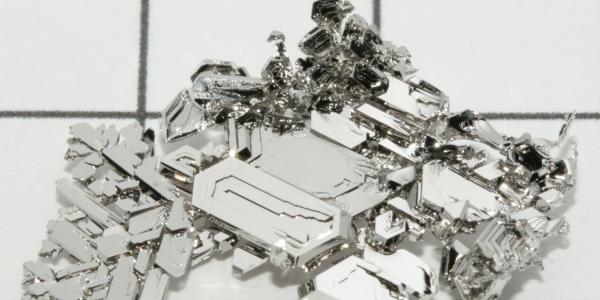A new grant from the U.S. Department of Energy will support geochemistry research on elements and minerals essential for the production of electric vehicles, cell phones, and computers.

Jeffrey Catalano, professor of Earth and planetary sciences in Arts & Sciences, won a three-year, $2.25 million award from the Office of Basic Energy Sciences at the U.S. Department of Energy (DOE). The award supports Catalano’s project “Geochemical Mechanisms Controlling Rare Earth Element and Platinum Group Element Migration and Enrichment during Crustal Aqueous Alteration and Weathering.”
Catalano’s work is part of the DOE’s larger effort to support research on rare earth and platinum group elements, such as neodymium and palladium. These materials are key components of motors in electric and hybrid vehicles, electronic devices like cell phones and computers, catalytic converters, flat screen displays, and a range of other items important to the U.S. economy.
Currently, nearly all production of rare earth and platinum group elements occurs outside of North America. Broadening U.S. access requires diversifying supplies, exploring new sources, and finding new ways to acquire and use these critical resources. To support these goals, the DOE is investing in understanding the chemistry of these elements in natural settings. Catalano’s work will focus on how critical elements interact with minerals during weathering, when rocks break down and transform into soils and sediments.
“Potential untapped resources for rare earth and platinum group elements occur in highly weathered environments; however, we currently do not understand how they are retained by the minerals present in these deposits,” said Catalano. “Understanding these relationships and how they vary for different rare earth and platinum group elements will make possible new ways to extract these elements from new sources. They may also enable less harsh and more environmentally sustainable methods of obtaining these elements,” Catalano added.
Catalano developed and will lead the project as principal investigator. His collaborators include Daniel Giammar, the Walter E. Browne Professor of Environmental Engineering in WashU’s McKelvey School of Engineering, and Eric Bylaska and Eugene Ilton, both at Pacific Northwest National Laboratory (PNNL). Giammar will assist with understanding how weathering processes might leach critical elements out of mineral structures and develop models to enable the team to predict when elements stick to mineral surfaces. Bylaska will carry out advanced computational chemistry studies, taking advantage of supercomputing resources at PNNL, and Ilton will lead studies of rust minerals as potential hosts of critical elements. The DOE support also enables Catalano to bring on two additional postdoctoral researchers to combine laboratory studies with analyses using advanced X-ray techniques.
According to Catalano, this multi-pronged approach will allow the group to address two primary avenues of inquiry. First, the group will investigate newly recognized rare earth deposits called ion adsorption deposits.
“Ion adsorption deposits hold onto rare earth elements despite forming in areas of high rainfall, where the elements should be leached away. Even more confusing, these elements can be easily recovered using mild acid,” Catalano explained. “Our project should discover why these deposits are uniquely enriched in the heavy rare earth elements, which are essential for hybrid and electric vehicles, and how these elements are retained in nature yet easily extracted.” Solving this apparent paradox will enable better prediction of where such deposits might occur – providing new sources to explore – and point the way toward better methods of extracting these elements without resorting to harsh chemicals that damage the environment.
Second, the group will examine platinum group elements trapped in iron oxide, or rust, that forms in ore deposits. Typically, these minerals are discarded during the mining process. “Our work should demonstrate how platinum group elements associate with iron oxide minerals,” Catalano said, “which would then enable the development of what is currently a waste product of mining as a new resource.”
Read the related press release from the U.S. Department of Energy.




